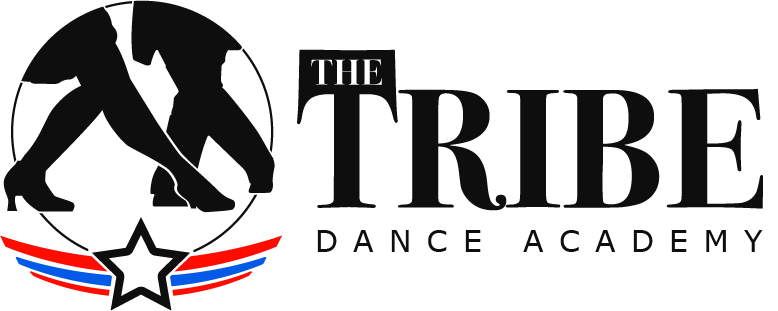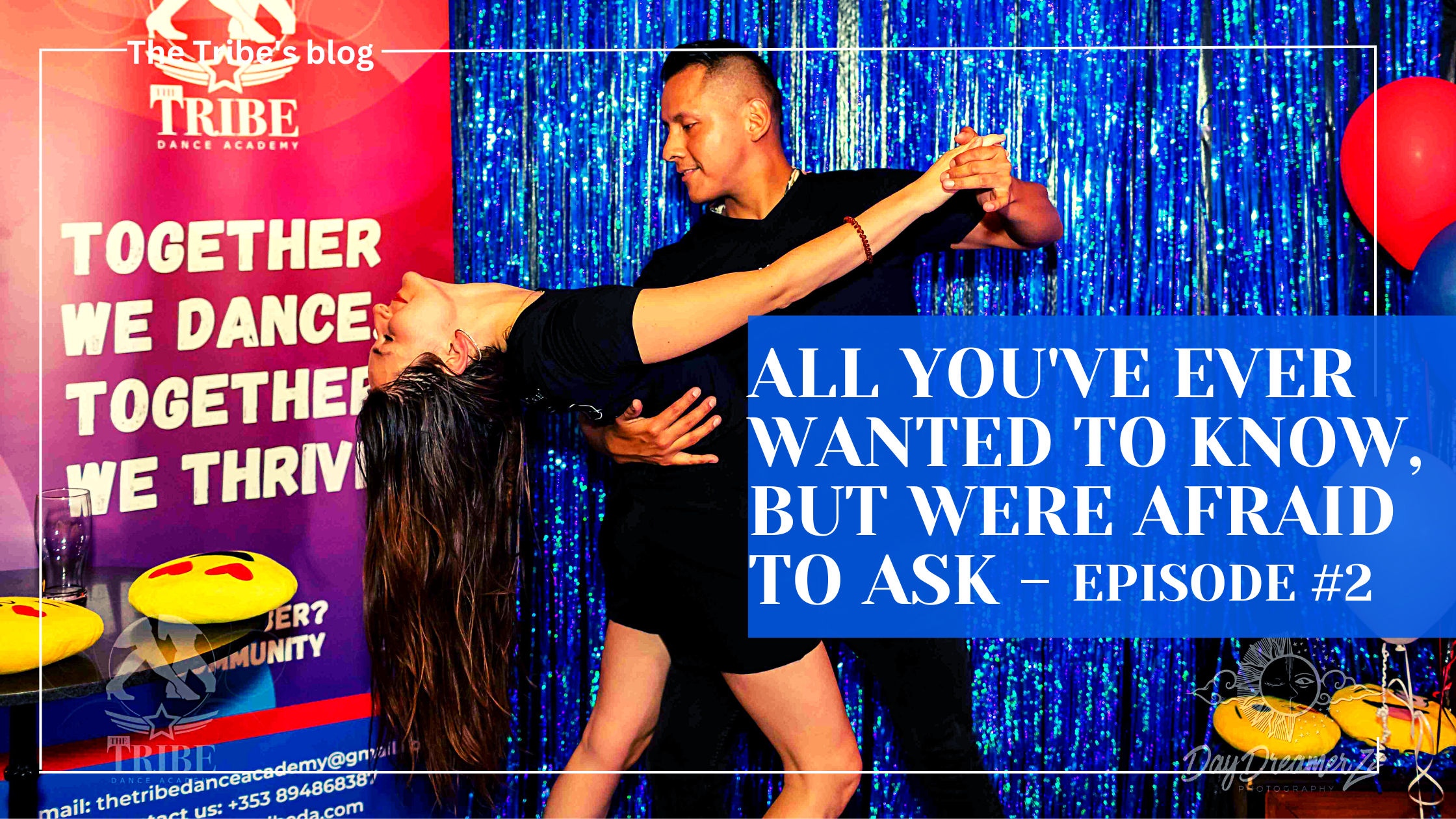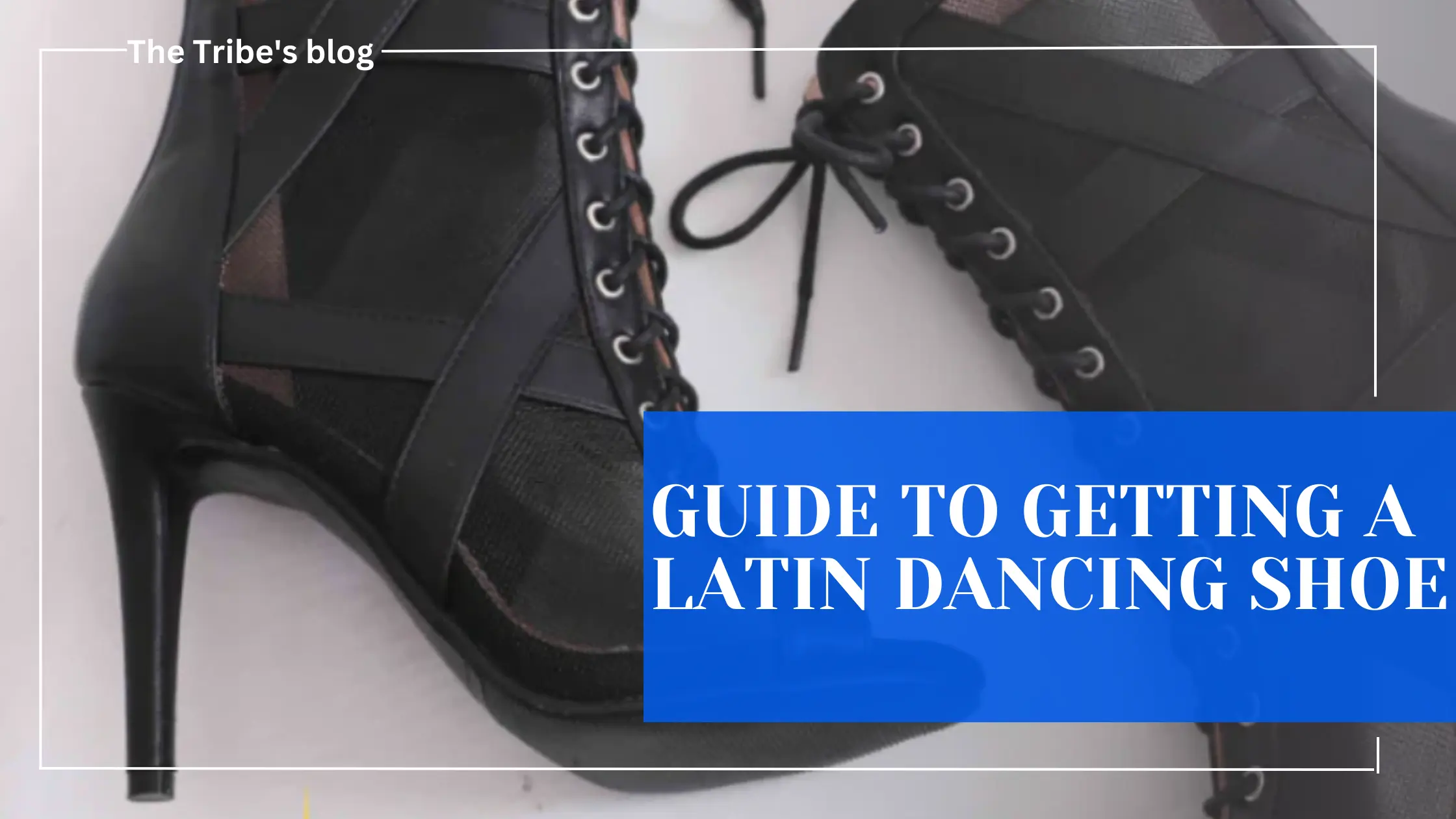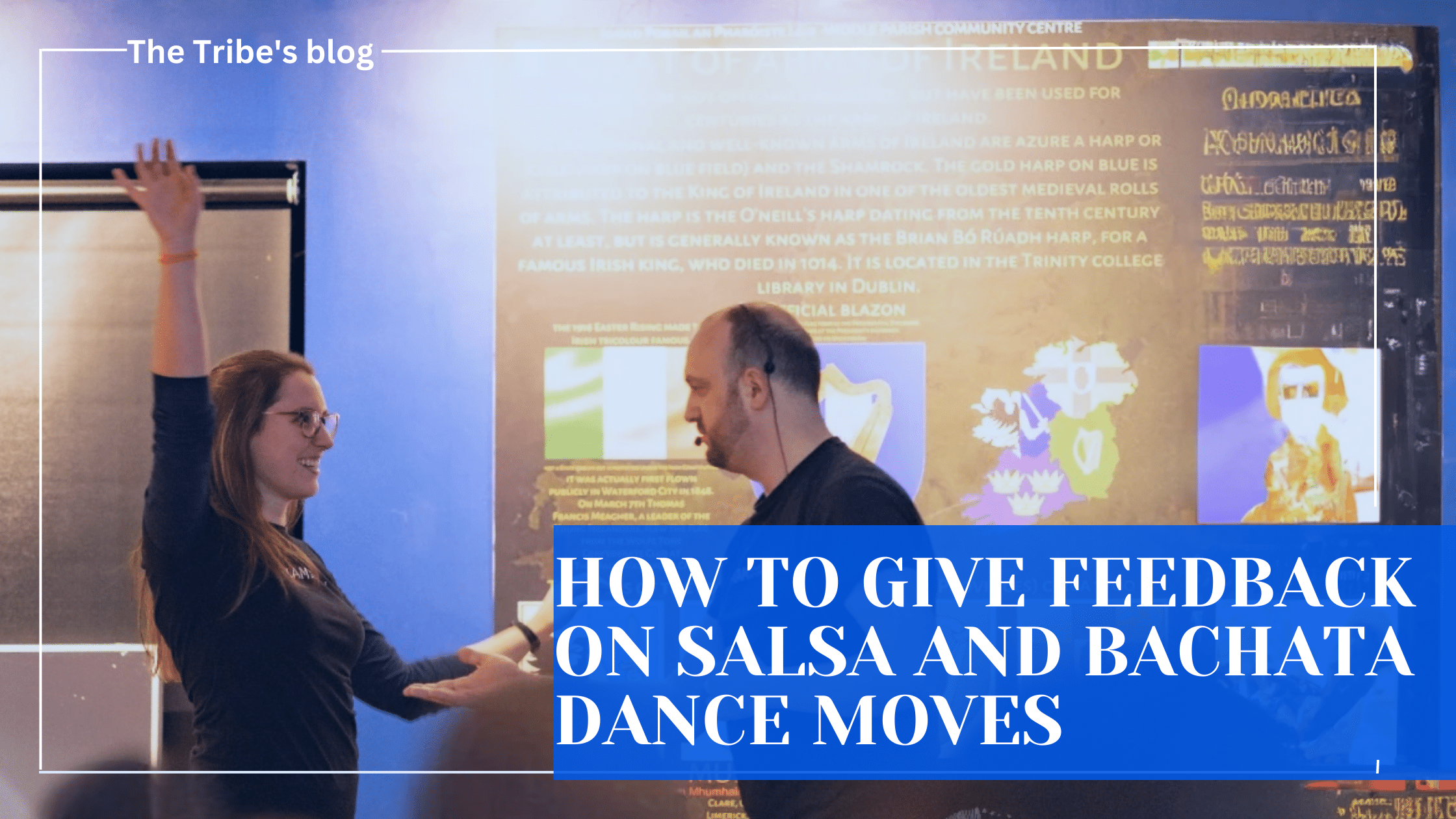Episode 2
A series by Doc Shades.
Hello again. Earlier, we talked about romance on the dancefloor, trying to answer the question of whether learning salsa and bachata could us help finding a romantic partner. We answered it, but left aside a very important topic. Important in general and not just in dance, but especially important in dance where trust and safety are the base of the community.
Let’s start with an observation: some Latin dances are very sensual, bordering on sexual for some moves. Salsa isn’t very sensual, but when we look at bachata, tango, or kizomba where there can be a lot of body connection, and tension between the dance partners, clearly the question of boundaries, respect and safety need to be addressed. So today, we’re having a serious talk about boundaries and respect. Not just in the context of a romantic quest (we’ll have a few words about this, don’t worry), but also in a more general point of view.
Some thoughts about what the word “boundaries” can encompass. The first and immediately material aspect is that of the body. Some parts of the body are just off-limits without specific consent. Period. Be it the breasts, crotch or buttocks, or any other part that one deems private. Each individual will have their own map of their body boundaries, and this map is to be respected. I will point out that all humans have such a map, and while most incidents happen upon ladies, everyone is concerned and everyone needs to be mindful of their partner. But boundaries are not just about sensitive parts.
It also concerns the physical limits that one can reach. Not everyone is perfectly flexible, so forcing them into a move that will hurt them is definitely an infraction when it comes to respecting one’s partner. And finally, there are mental and emotional boundaries. We’d like to think we can read people’s minds, but we can’t. Someone may not have the headspace to receive and process displays of interest. A barrage of personal questions at the wrong time may leave lasting damage in their own mental world, and in their perception of you. So the limits of what emotional input someone can, or is willing to process, are what we can call mental boundaries.
Let’s talk about respect. In addition to politeness, hygiene and other similar considerations, in this context, it is about identifying one’s partner’s boundaries and making sure to not overstep them. It matters in general, and it matters even more in dancing. Here’s why. Dance is a moment shared between two persons. It is not just a sequence of moves following a musical track. It’s about connection. To establish and sustain this connection, there is one ingredient that we can’t do without, and this ingredient is trust. If there is no trust, there can be – there must be! – no dance. And if there is overstepping of the boundaries, the trust is broken. I think you can do the math from here. So be a considerate dancer, and think before you move.
When it comes to physical boundaries, a good rule of thumb to get us started with respecting them is that hands and other body parts are to stay clear of any classic off-limits areas! As for the rest of the partner’s personal boundary map, since there is no standard it is up to both parties to help each other feel safe and comfortable. I for one don’t appreciate having my hair manipulated without warning, but I cannot expect my partner to know that so I know it is my job to educate them on this specific. So if they do act in a way I find intrusive, I tell them how it’s not okay for me, and give them the one chance at doing better. And once they know, any infraction is considered overstepping. I will add that a boundary doesn’t cover just ordinary contact. Certain grips and moves, even done in otherwise acceptable areas, may not be tolerated as they may carry an unwelcome sensory or emotional charge.
Continuing with the physical limits, the goal is pretty simple: no hurting your partner! A typical example is that of a leader pushing their follower to execute a specific move. If their body won’t allow it, then the move must not happen, for simple safety reasons. Similarly, a common mistake – especially with beginner followers – is that they will use their leader to support their own weight.
In practice, it takes the form of leaning on the leader’s shoulder in a close embrace holds. It can be a full lean, which will usually trigger an instant reaction from the leader, or simply the weight of the follower’s arm and for mechanics reasons, the pull that goes with it. it may not be much, but in a matter of minutes, it will go from being a mild inconvenience to full-on discomfort and even actual pain, as it puts a constant strain on the leader’s shoulder.
This is why the teachers always tell us that the hands go on the shoulder blade, not on the shoulder. Because then, it forces us to carry our own weight and ensures that both partners are comfortable and safe. Summarising this for you, here is an idea. If a partner won’t execute a move, don’t insist. If they show signs of discomfort, consider disengaging and reworking your position and balance.
And for the victims of these situations, know that you are fully legitimate to express your discomfort and request your partner to not persist. We’re talking about your safety and your health here, this is a serious matter and if it is put at risk, you are in your full right to say so and to act accordingly. Bruising your partner’s ego is preferable to ending up with a bruised arm or a dislocated knee of your own.
Here is a little recipe that I think provides a decent baseline on dancing etiquette: if you don’t know what your partner can do, start slow. Gradually increase the challenge while monitoring the situation, and if you sense you may get close to your partner’s limits – or your own, leave a bit of safety margin and don’t push any further.
And for body boundaries, the same idea applies: start with the standard we discussed, and if you want to go to something different, get there slowly so that your partner has the opportunity and the headspace to stop you before you overstep. And to the other side of the couple: you are fully legitimate, in any circumstance, to enforce your boundaries, with a push, slap, or a well-targeted knee if the situation calls for it. We will discuss practicalities towards the end, once we’ve reviewed the other scenarios.
Now I know you’ve been lured here after reading the romance piece, so let’s look into this aspect as this ties in nicely with the aspect of mental boundaries. Like a friend of mine said, the tango energy is about being just about to kiss, but not quite. A similar tension makes for a great moment in bachata too. And that’s the extent of my experience, so I’ll let you fill in the gaps for the other styles. So let’s look at when we’d like to forget the “not quite” and go full steam ahead with the kissy part!

JOIN THE COMMUNITY!
DANCE WITH THE TRIBE
The free community to follow your passion and improve your skills...
- Content
- Articles
- Free lessons
- Tips
Sharing a dance with someone, especially when it goes so well that we feel we have a very special moment, is something amazing, and I wish for everyone to experience this. Lots of oxytocin being released, and chances of butterflies too. Now mix this with a romantic interest, and I let you imagine the hormone cocktail one may experience.
Something that would get you the approval of Maury and Connie the hormone monsters. But with raging hormones comes a risk that cannot be overlooked: that one may misread the situation and overstep their partner’s boundaries, be they physical or mental. I want to emphasise something here: your emotions are your own, and what you do about them is your sole responsibility. So don’t give me the classic “they gave all the signals” response. In dance, trust is a non-negotiable and getting physical with someone without explicit consent is an immediate deal-breaker.
I know it is harsh, but this is too important and there are ways to proceed with respect. So here is one for you: when you dance with someone, always assume they are not attracted by you. They may be executing crazy sensual moves, providing all the tension of “almost kissing but not quite”, I don’t care: always work under the assumption that this is part of the show and not a reflection of their own feelings. Now worry not, there is a solution that helps keep everyone safe and comfortable.
We use the tongue. No, not like that, you dirty mind! We wait for the dance to be over, and we talk about things. We request to discuss in a quieter place, and if they accept we explain how the dance felt special, and we go on from there. Just like with the physical boundary progression I was talking about, the emotional charge of the talk can be slowly increased, giving your partner ample opportunity to stop you when they feel uncomfortable, or to encourage you to carry on if your interest happens to be reciprocated.
I think this disconnect between what happens physically during the dance, and what is discussed with words after, provides us with a safe enough environment that gives us a fair chance to present our case to someone we fancy while making sure there is no damage done through physical interaction before we’ve had a chance to ensure the person in front of us is receptive and consenting to it.
The lovestruck may find this heavy, and the shy may not like the idea of using words to express their feelings, and I’m with you on that one, it is an extra mental layer that comes with a price. But not having this crucial discipline is too risky for everyone involved. And by following it, you will show your respect and consideration for the person in front of you, and this can only facilitate a positive outcome for your romantic quest.
Now note how I was describing how, even for a talk, being progressive in the emotional charge was key. This is because there is a boundary we haven’t discussed in detail yet: the mental boundary. Intangible, as it is in the mind of the other person, but critical as overstepping it can be just as much a deal-breaker as physical boundaries. You don’t know what is happening in the other person’s life.
So it doesn’t matter how close you were during the dance, or how friendly they sound, you cannot drop a heavy emotional charge on them without warning. While being vulnerable is a great way to bond with someone, allowing them to see who you are, there may be times when they don’t have the empathic bandwidth to deal with it, even more so if you don’t really know each other already. So for this one, all I can say is: pay attention, ask first, and proceed progressively, to give them a chance to tell you to stop.
And their telling you may not be verbal. It could be silence, it could be body language with them tensing up or disconnecting, all these are clues that you may be going ever so slightly too far. And not all people have the bandwidth to actually express and enforce their own mental boundaries so go easy on them first. I have a friend with whom I worked out a system that we now use with each other.
If we need to vent, we ask first “do you have the bandwidth for me at the moment?” verbalising it, as well as getting the answer, is a display of mutual care that means that even if there is no bandwidth, we demonstrate that we care and it helps a bit. So tread carefully, ask first, and if there is any clue that they might not be in shape, please refrain from demanding too much. Just like you wouldn’t force someone to execute a move they can’t do.
I realise that this mental boundary is an everyday life thing, not just a dance-related thing. But hey, we dance as a way of life, so there doesn’t need to be a disconnection!
Right! I believe we have now a solid overview of dancefloor etiquette when it comes to boundaries. Take it slow, don’t force it when the response is negative, and don’t assume any authorisations before it has been verbally confirmed first. But Doc, what if someone disregards those guidelines and makes me feel uncomfortable?
Well, a few resources are available to you. The first, immediately available and always legitimate response is to physically separate from the infringing individual. This disconnect is the opportunity to find safety to process what is going on, and possibly to inform the infringing party that their actions were inappropriate, giving them a chance to apologise and correct any honest mistake.
If this solution is insufficient, going to someone you trust to find safety is possible, and I can’t think of a trusted person who wouldn’t welcome and help out someone in need of support. And because they are not directly victims of the incident, they can help figure out an adequate course of action. Ultimately, be it in class or at an event, there are figures of authority that one can turn to. A teacher, or an assistant, or maybe the organiser of the event.
They will welcome you and will help you through the event, and will have the authority to determine – with your feedback – the adequate course of action to be taken from there. It can range from stern talking to with demand of an apology from you, using their authority as leverage to get the message across, to removal from the class or even banishment from the school or the event. And beyond these resources, it is my impression that the dance community is very protective of its members, and that word travels fast.
As a consequence, anyone identified as a threat to the well-being of the dancers will be isolated very quickly. And even though this may result in overreactions in the case of honest, unique mistakes that aren’t being addressed giving a chance for correction, it also means that the community is an aggressively self-regulating organism that will be very effective at protecting its own, if help is asked or if suspicion arises.
Here come the closing thoughts. So far, the tone of this series was kept quite light. But this series is not just about the good parts of the dance: it aims at providing a reflection on the real situation. So after talking about romance on the dancefloor, I thought it was important to follow up with the heavier subject of boundaries.
Because it connects, and also shows that this is something we take seriously, and it isn’t just a few words spoken at the beginning of the first class of the course. The Tribe is thought and designed to be a safe space, with regulation procedures but also welcoming of everyone, struggles included.
That’s also why I wanted to write this piece: when we are blinded by our own mind state, we may not have the bandwidth to think about how we want to go about doing things. So here, with practical recommendations, I try to provide you with ready-made methods that minimise risks of discomfort while maintaining a chance for positive developments, be it in the complexity of the dance or the depth of the bond with another person.
So that you may adopt and adapt this basic recipe instead of having to figure it out from scratch, or after making mistakes that could have been avoided otherwise. But most importantly, I wanted to review a few options available to those who are victims of boundary-overstepping situations, in the context of a dance class or community event.
I am a man. With only a couple years of dance experience behind me. As such, I have only limited exposure to boundary incidents. So to write this piece, I have tried to reach out to different people, particularly females and teachers, to try and get a less biased picture of the situation.
But I cannot exclude that I may not have treated these points in a fair, unbiased way. This is why, if you think an aspect has been poorly developed or has been omitted entirely, please reach out to the Tribe crew who will pass on my contact to you so that you may present me with your comments, and so that I may discover a new point of view, gather feedback and if necessary, organise a follow-up or correction publication later on.
Talk soon,
Doc Shades






